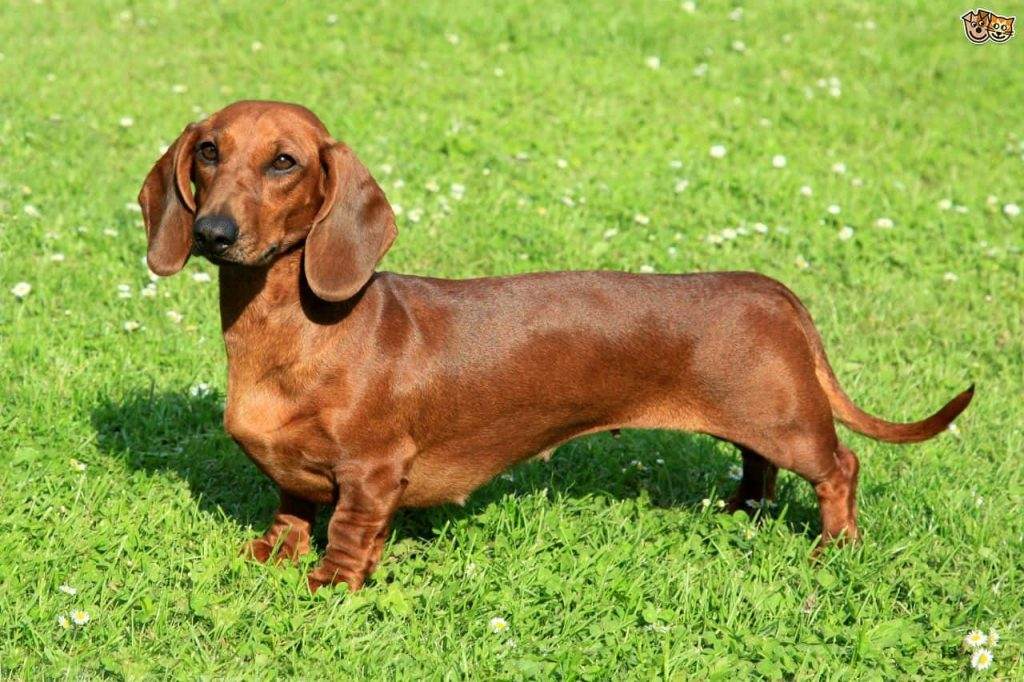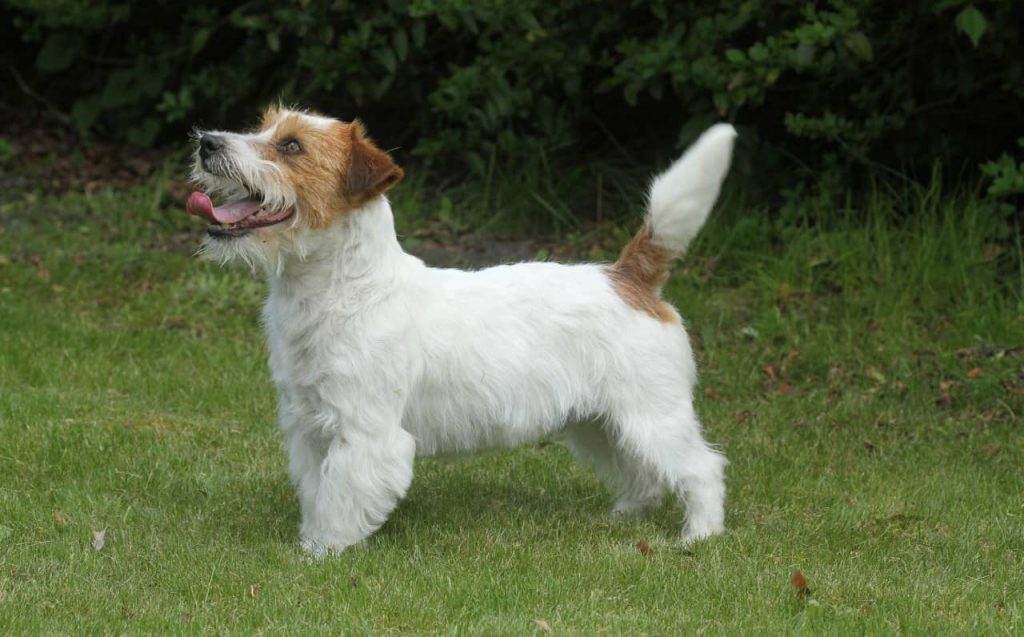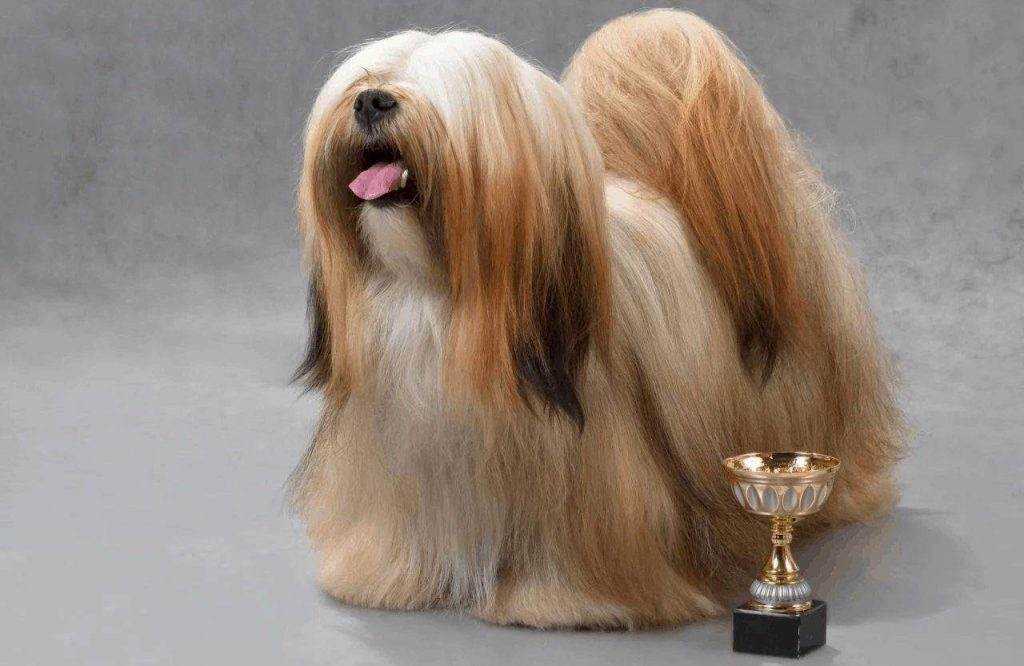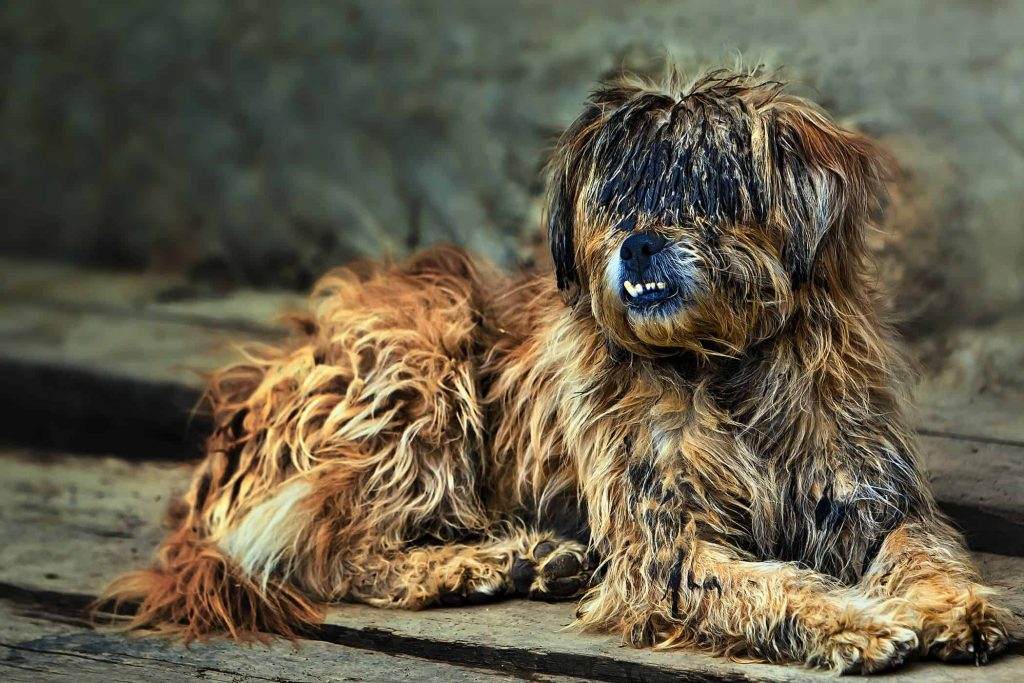Dogs come in different shapes and sizes as well as with many different types of coats. When it comes to puppy fur, it is not one size fits all, and with each varying coat comes a unique set of instructions.
Remember that each dog is unique, and so its the care it will need. If you want to groom your dog the right way, it‘s important to know how to best care for the particular fur of your dog and avoid any possible complications in the future.
Types of Dog Fur
Curly Coat
A dog with a wavy or curly coat has soft and thick curls close to its body. This kind of coat needs a soft slicker brush when it comes to grooming as well as extra care. Breeds with this coat type are Bichon Frise and the poodle.

Smooth Coat
A dog with a smooth coat does not require regular grooming, but its hair should be cared for regularly. The main focus here should be on quality, especially when it comes brushing and to bathing. Some of the breeds with this kind of fur include the dachshund and the bull terrier.

Wire Coat
Dogs with wire coats are more susceptible to tangles and matts and require consistent grooming. Terrier dogs are the most popular category when it comes to this coat type.

Double Coat
Dogs with double coat will require a little more care and love. These dogs might have long or short hair. You can use a slicker brush along with a wide-toothed comb. Breeds with this kind of coat include Border collie, the Rottweiler, and Chow Chow.

Long Coat
Dogs with long coats might need more attention than other dogs, but don’t get scared. You should look for a grooming regimen that best suits you and your canine friend.
Start by finding out if they have a silky or coarse coat. From there, you should determine the kind of brush to go for, and you will require a detangling shampoo. Common breeds with this coat type are Maltese, Lhasa apso, and Yorkshire terrier.

Popular Dog Fur Problems
Fur problems in dogs are as a result of different allergies, but they can also be caused by certain diseases and illnesses. The condition of your dog’s fur might be an indicator of numerous problems related to its immune system.
That means that monitoring of any changes carefully will be pretty beneficial. If you realize any changes, like poor coat luster, excessive scratching or patches of missing hair, one of these dog fur problems might be indicated.
1. Bald Spots in Dogs

Bald spots are one of the most common fur problems in dogs. If inflammation or itching are involved, your dog might be compelled to excessively lick or bite a certain spot on its coat. These are known as hot spots and might be accompanied by scaly, inflamed or red skin.
Reasons for bald spots
- Exposure to contact dermatitis or toxins – The part of the skin that has been exposed to toxic substances might become inflamed and itchy. That can result in the development of temporary bumps, scales, seeping pustules, or loss of hair.
- Calluses – This condition results from continuous pressure on parts like the elbows. They lead to the development of bald spots or thickening of the skin in the area and might become secondarily infected.
- Medication or vaccine reaction – This type of reaction is known as alopecia, and causes permanent hair loss where topical ointments were applied or at the area of injection. This condition might develop after a couple of months.
Symptoms of bald spots
- Continual licking or chewing at the site
- A painful and itchy patch of skin
- Possible depression which is associated with painfulness of the site
- Abnormal aggression associated with painfulness of the site
- Redness, swelling, and inflammation in a localized part of the skin
- Dry, scaly skin
- Oozing sores or crusted scabs
- Hair loss moist and matted fur foul smell from the lesion
Solutions to bald spots
- Cleaning – You should clean your dog thoroughly. Shave off the matted fur from the affected part.
- Treating bacterial infections – Topical or oral antibiotics are administered. Antibiotic treatment might last approximately four weeks or even longer.
- Medications for inflammation and pain – Antihistamines might be prescribed to minimize irritation and itchiness. NSAIDs can also be prescribed to minimize inflammation.
- Dietary supplements – Some essential fatty acids might be recommended for dogs prone to skin problems.
- Treating initial irritation – According to experts, some cases of bald spots are idiopathic. Hypoallergenic diets or monthly flea treatments can address allergies. Also, keeping the fur cut short or regular grooming can prevent matting, which is a popular cause of skin irritations.
2. Hair Loss in Dogs

Fur problems in dogs that cause considerable hair loss can sometimes be an indication of severe health risks.
If your dog begins to lose its hair all over the body, this might indicate a weak immune system, which creates the possibility for many other serious disease and infections. Several conditions cause loss of hair, both in dotted patches or all over the dog’s body.
Reasons for hair loss in dogs
- Mange – This condition is caused by mites and leads to big patches of significant hair loss, self-trauma, and severe itching. The skin might darken, and pustules and redness might develop.
- Allergies – They are caused by reactions to certain foods, dust, pollen, mold, or even flea bites. It might cause bumps, scaly or itchy skin, hair loss or patches of sparse hair, infection and redness.
- Ringworm – Fungal infections are highly contagious and causes patches of hair loss, similar to Mange. The condition is not life-threatening and might or might not cause itching.
- Cushing’s disease – This condition is caused by an increase of corticosteroids in the dog’s body, occurring due to long-term treatments with these drugs or even naturally. It causes hair loss, at times in patterns, bruising, lethargy, and thinning of the skin.
Symptoms of hair loss
- Overall hair loss
- Scaly skin
- Patches of baldness
- Loss of hair around the mouth and eyes
- Symmetrical hair loss which appears in a similar pattern on both sides of the dog’s body
- Inflammation and crusting of the skin
- Dark, grey or discolored patches of skin
- Wounds and itchiness caused by scratching
- Bleeding or oozing around parts of hair loss
Solutions to hair loss in dogs
- Antibiotics can treat bacterial infections.
- Steroids might be needed to treat specific skin conditions.
- Antifungals can treat ringworm and yeast infections.
- Anti Cytokine Drugs or Immuno-suppressive Drugs might be required for environmental allergy control.
Most often, life-long treatment is required.
- Behavioral medications can be used to treat nervous licking or chewing.
- Immunotherapy might be needed by injection or orally for allergy desensitization.
- Medicated dips or shampoos can treat conditions of Mange.
- Monthly flea preventative might also help in clearing up hair loss associated with flea allergies.
- Hypoallergenic diets are used to solve hair loss caused by food allergies.
- Hormone therapy and Thyroid medication can reverse hair loss in endocrine and hormonal disorders.
- Insulin therapy can clear up hair loss, which is associated with diabetes.
- Spaying or neutering your dog might be recommended for sex-hormone disorders.
- Vitamin A, Vitamin E, and fish oil supplements might be recommended for dogs with a predisposition to skin infections or dry skin as well as certain conditions.
- Surgery might be needed to remove parts of skin tumors or cancer. If your dogs have splinters or thorns, the object can be removed, and ointments and antibiotics can aid in healing.
- An Elizabethan collar or e-collar might be needed to prevent your dog from itching or licking at the affected parts until healed.
3. Poor Hair Coat

This condition is a common dog fur problem which can be identified by brittle, dry or sparse patches of dog fur as well as lack of coat luster. If this problem persists for a long time, you should consider seeing your veterinarian.
Reasons for poor hair coat in dogs
- Poor diet – Feeding your pet with low quality food might result in significant changes to its hair coat.
- Diabetes – This condition can lead to thinning of the dog’s skin, some patches of scant hair that loses luster and might fall out.
- Hypothyroidism – It is caused by a decrease in the production of thyroid hormones and may lead to dry and brittle coat as well as hair loss.
Symptoms of poor hair coat
The symptoms of poor hair coat in pets can begin with poor skin problems and later progress to the hair coat from there. Some of the symptoms you will notice include:
- Lackluster and dull look to the dog’s coat.
- Scaly flakes or dandruff on the hair of the pet’s coat.
- Dryness or brittleness whenever you feel the coat.
- Foul smells from the coat and skin of your dog.
- Frequent licking, biting or itching of various areas.
Solutions to the poor hair coat problem
Once the results of the needed tests are collected, your vet will create a treatment plan that is based on the actual cause of the dry skin problem or brittle coat in your dog. Your veterinarian professional will likely recommend:
- Anti-fungal medications or antibiotics if there is an infection.
- Topical medications for the immediate issue of the dry skin and maybe some medication to assist in easing the itching discomfort your family pet is experiencing.
- Hormone treatment especially if the cause of the nature of the problem is endocrine-like such as thyroid dysfunction, Cushing’s disease, and diabetes.
- Some recommendations might be made for special bathing routines which can include medicated and any other special shampoo preparations that help in the skin healing process.
- Your vet might recommend anti-inflammatory medication to help in easing the discomforts and also promote healing.
All these treatment options might be combined, and you may be asked to repeat them until the conditions are brought under control, which might be a lengthy process.
Conclusion
Just like your skin and hair, a dog’s skin and coat are also a reflection of its overall health. Therefore, it’s important that you take good care of the skin of your canine friend since the skin is among the most vital organs of a dog’s body.
The skin forms a barrier that protects your beloved pet from a variety of infections, and it also assists in maintaining the internal environment of its body.
Grooming is not all about maintaining the level of cleanliness of your dog, and it is not all about keeping your puppy good-looking. Grooming is all about maintaining both the physical health the appearance of your dog.
To achieve this, you should start training your canine friend to endure grooming while it is still a small puppy. If you wait for a long time to start the grooming sessions, a puppy might not be agreeable to the practice later on, particularly when it comes to nail clipping and ear cleaning.
That is especially significant for long-haired canines because they need more intense grooming sessions when compared to their short-haired counterparts.
It takes a lot of time to brush and clean their long fur, and they also need to get used to remaining still for this beginning at an early age. However, that does not mean that dogs with short and clipped fur don’t need grooming.
I have also written an article on the overall grooming of your dog and it covers all parts of his body including ears, eyes and paws. Make a point to go through it also.
In conclusion, grooming assists in keeping your dog healthy and happy gives you and your canine friend enough time to bond and assists you in saving on veterinary bills. Therefore, you should not delay; begin grooming your small puppy early.
References
- https://www.jdsjournal.com/article/0923-1811(95)90001-2/pdf
- https://spasb.ro/index.php/spasb/article/download/804/761
Table of Contents
